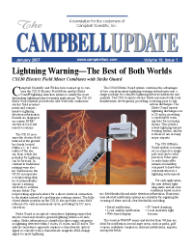创新的和易于使用的,新的LWS介质Leaf Wetness Sensor enables accurate and affordable leaf wetness monitoring. Many fungal and bacterial diseases affect plants only when moisture is present on the leaf surface. The LWS manufactured by Decagon Devices detects the presence of wetness on a leaf’s surface, enabling researchers and producers to forecast disease and protect plant canopies.
How It Works
The LWS approximates the thermal mass and radiative properties of leaves to closely mimic the wetness state of a real leaf. The way it works is simple: if the canopy is wet, the sensor is wet; if the canopy is dry, the sensor is dry. The LWS measures the dielectric constant of the top of the sensor. The dielectric constants of water (80) and ice (5) are higher than air (1), so the sensor can determine the presence or absence of wetness using this method. Measurements can be logged at user-defined intervals to determine the duration of wetness on the canopy.
Sensor Benefits
Because the Leaf Wetness Sensor measures the dielectric constant, moisture does not need to bridge electrical traces for the sensor to detect moisture: the presence of water or ice anywhere on the sensor surface will be detected. Unlike our 237 sensor, it requires no painting nor user calibration, and it can detect ice presence.

